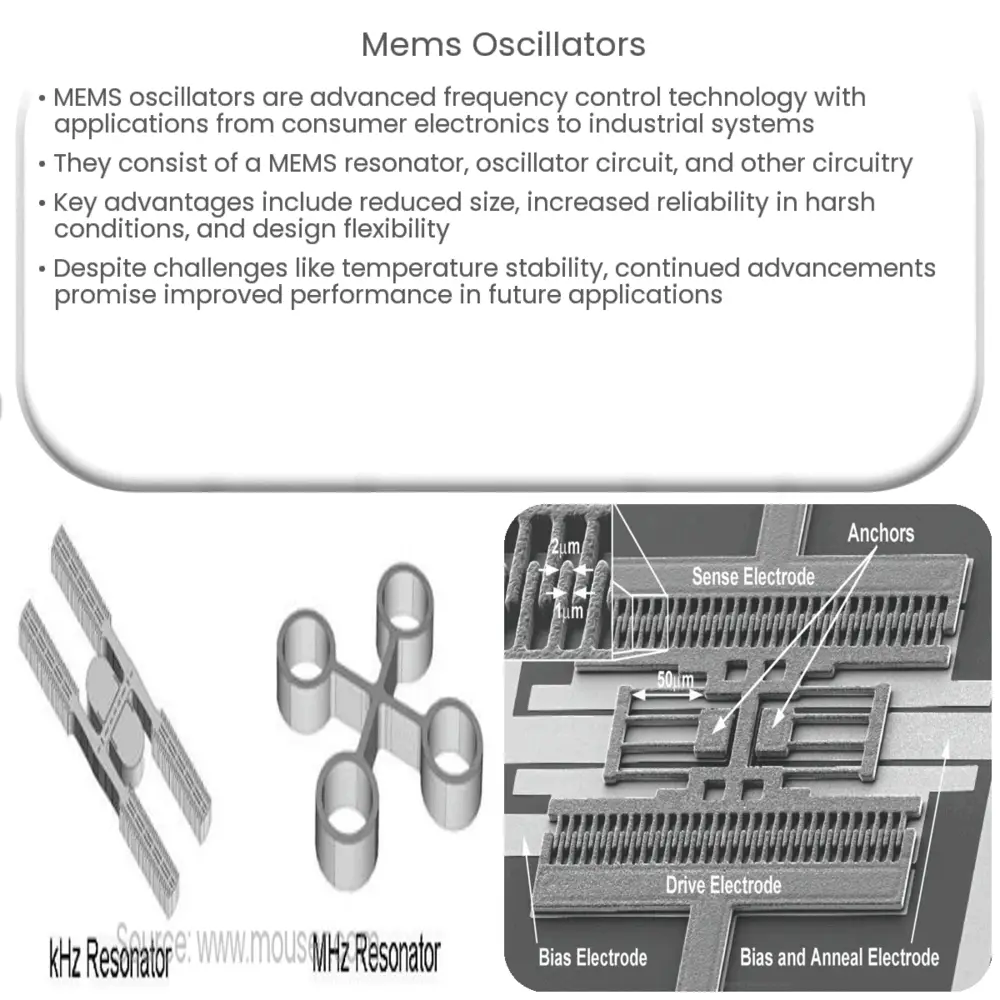Explore MEMS Oscillators: their working mechanism, advantages, applications, challenges, and future trends in the electronics industry.

Introduction to MEMS Oscillators
MEMS oscillators, or Micro-Electro-Mechanical Systems oscillators, represent an exciting advancement in frequency control technology. These electronic components have a wide range of applications, from consumer electronics to industrial systems, and their unique characteristics provide significant advantages over traditional quartz-based oscillators.
What are MEMS Oscillators?
MEMS oscillators are devices that generate an output frequency to help track time, manage data transfer, and stabilize signals in electronic devices. They are composed of a MEMS resonator, an oscillator circuit, and supporting circuitry packaged together.
How Do MEMS Oscillators Work?
In a MEMS oscillator, the MEMS resonator—a tiny mechanical device—vibrates at a specific frequency. This vibration, amplified by the oscillator circuit, produces a consistent frequency output. The resonator’s frequency is determined by its physical properties, such as size, shape, and material.
Advantages of MEMS Oscillators
-
Reduced Size: MEMS oscillators are significantly smaller than quartz oscillators, allowing for compact electronic designs.
-
Improved Reliability: They are less susceptible to mechanical shock and vibration, making them more reliable in harsh conditions.
-
Flexibility: MEMS oscillators can be programmed to output a range of frequencies, providing flexibility in design.
Applications of MEMS Oscillators
-
Consumer Electronics: In devices like smartphones, wearable tech, and IoT devices, MEMS oscillators help manage data transfer and maintain stable signals.
-
Automotive Systems: In advanced driver-assistance systems (ADAS), MEMS oscillators provide accurate timing necessary for safe, responsive control.
-
Industrial Control Systems: In applications such as robotics and automated assembly lines, they ensure precise, reliable operations.
Challenges Facing MEMS Oscillators
Despite their many advantages, MEMS oscillators also have challenges to overcome. One key issue is temperature stability, as changes in temperature can affect the oscillator’s frequency. Manufacturers are continually refining their designs to mitigate this issue.
Overcoming the Challenges
To combat temperature instability, advanced MEMS oscillators utilize temperature compensation techniques. These methods employ internal sensors and calibration algorithms to adjust the output frequency based on the detected temperature. As a result, these devices can maintain accurate frequency output across a broad temperature range.
Future of MEMS Oscillators
The future of MEMS oscillators looks promising. With continued technological advancements, these devices are expected to offer even higher performance and reliability. Future developments may involve further miniaturization, improved power efficiency, and enhanced frequency stability. MEMS technology could also intersect with emerging technologies, such as quantum computing or advanced AI systems, creating new possibilities and applications.
Trends in the MEMS Oscillator Market
-
Increased Demand: The demand for MEMS oscillators is predicted to grow in the coming years, driven by the proliferation of IoT devices, the growing automotive sector, and the increasing adoption of 5G technology.
-
Technology Integration: The integration of MEMS oscillators with other semiconductor devices on a single chip is expected to be a key trend, leading to more compact, efficient designs.
-
Manufacturing Innovations: Innovations in manufacturing processes will likely reduce costs and increase the scalability of MEMS oscillator production.
Conclusion
MEMS oscillators represent an innovative leap in frequency control technology. Their unique characteristics, including reduced size, improved reliability, and design flexibility, provide distinct advantages over traditional oscillators. While challenges such as temperature stability exist, ongoing advancements and innovations are continually improving their performance. As the demand for more efficient, reliable, and compact electronic devices grows, the role of MEMS oscillators is set to become increasingly significant in the electronics industry.

